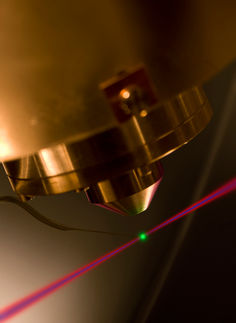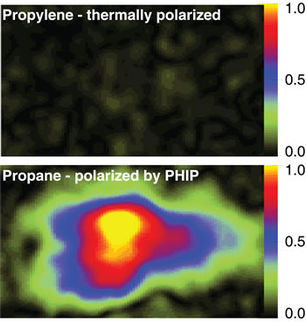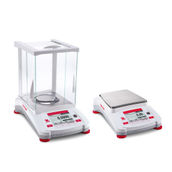Physicists' findings about helium could lead to more accurate temperature
In the May 7 edition of Physical Review Letters an international team led by University of Delaware researchers reports new findings about helium that may lead to more accurate standards for how temperature and pressure are measured.
In the article the scientists provide a new theoretical computation of the force acting between a pair of helium atoms, referred to as "pair potential," that is more accurate than any published to date.
Krzysztof Szalewicz, professor in the UD Department of Physics and Astronomy, led the study, which involved Wojciech Cencek, a postdoctoral researcher at UD, and colleagues from the University of Warsaw and Adam Mickiewicz University in Poland, and the University of Oslo in Norway.
Most of us know helium as a gas for filling party balloons or for making your voice temporarily sound like a cartoon character's. But this element named for the sun is used in lasers for eye surgery, to cooling agents in nuclear reactors.
Helium has a number of characteristics that make it special, Szalewicz says. It is the most stable of all the elements and has the lowest boiling point. It becomes a fluid at temperatures close to absolute zero while most other materials are a solid. In fact, helium is a liquid even at absolute zero and becomes a solid only at high pressure.
Helium is the only substance that exhibits superfluidity, and it will not burn or react with other elements, which is one reason why it is used as a pressurizing agent for liquid fuel rockets in space exploration, among many other applications.
"Of all the elements, helium is closest to the ideal gas," Szalewicz says. "Two helium atoms form the weakest bound diatomic molecule. All the properties of temperature, for example, which is a measure of the kinetic energy of particles in matter, can be modeled if the force acting between a pair of helium atoms is known.
"This has been the subject of extensive activity," Szalewicz notes, "as accurate knowledge of the pair potential of helium is of importance in several branches of science, including low-temperature condensed matter physics, spectroscopy, and metrology, which is the science of measurement."
The research team used complex numerical techniques to compute several physical effects in the helium pair potential which are rarely considered in molecular physics. These effects include couplings of the electronic and nuclear motions, contributions due to Einstein's special relativity, and the so-called quantum electrodynamics contributions due to the interaction of the electrons with the electromagnetic field.
The scientists predict that the binding energy of two molecules of helium, chemically referred to as a "dimer," is 6,790 times smaller than the potential depth, and the average separation between the atoms is 47 angstroms compared to the typical chemical bond length of about 1 angstrom. The estimated uncertainties of the theoretical results are an order of magnitude smaller than the best experimental ones, they report.
The thermophysical properties of gaseous helium computed from this potential now will be used to calibrate the apparatus for measuring properties such as viscosities or the speed of sound.
"These calculations should lead to new, better standards for quantities such as temperature or pressure," Szalewicz says. "Continuous improvement of metrology standards is important for progress in experimental science, as well as in many industrial applications."
These products might interest you
See the theme worlds for related content
Topic World Spectroscopy
Investigation with spectroscopy gives us unique insights into the composition and structure of materials. From UV-Vis spectroscopy to infrared and Raman spectroscopy to fluorescence and atomic absorption spectroscopy, spectroscopy offers us a wide range of analytical techniques to precisely characterize substances. Immerse yourself in the fascinating world of spectroscopy!

Topic World Spectroscopy
Investigation with spectroscopy gives us unique insights into the composition and structure of materials. From UV-Vis spectroscopy to infrared and Raman spectroscopy to fluorescence and atomic absorption spectroscopy, spectroscopy offers us a wide range of analytical techniques to precisely characterize substances. Immerse yourself in the fascinating world of spectroscopy!


























































